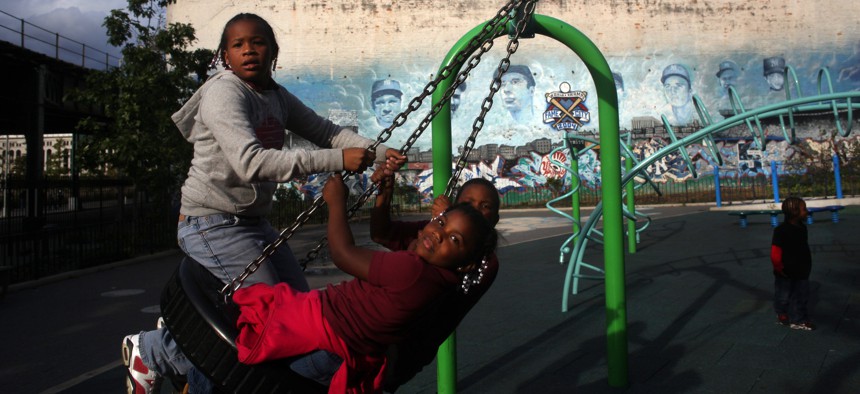Report: The Bronx faces greatest barriers overall for children’s well-being
Citizens Committee for Children releases its annual report outlining the current state of children’s well-being in each county of New York’s counties.

Tim Clayton - Corbis / Contributor
Citizens Committee for Children has released its annual “Child & Family Well-being in New York State” report on the barriers to childrens’ well-being in New York. It outlines the economic security, health, housing, educational and safety challenges families and children face in all 62 counties of the state.
The report finds that in the Bronx County, more than a third of children live in households below the poverty line, which is almost 20% higher than the state rate. “The fact that the child poverty rate is higher than the statewide child poverty rate is something we need to pay close attention to – especially considering the fact that the statewide child poverty rate is concerning,” said Bijan Kimiagar, associate executive director for research at CCC.
“Nearly 20% of children in the state live in households below the federal poverty level,” Kimiagar explained. “When we consider the higher cost of housing, food, child care, and other basic necessities, the economic security families need to thrive demands an income much higher than the federal poverty level of about $26,000 for a family of four for the years of data we analyzed.”
Children in Bronx County face the most barriers when it comes to their well-being, while Saratoga County has the least according to the ranking.
The report also found that in 30 counties, more than 15% of households have no broadband internet, more than double the national rate. And in 29 counties, more than 20% of children live in households below the poverty line, which is at least 4% higher than the national rate
When it comes to racial equity, the report found that the racial makeup of households with the greatest barriers to a child’s well-being was a majority Black and Latinx, while the households with the fewest barriers were white.
“We have to acknowledge that communities of color are experiencing the effects of centuries of institutional racism that have created deep and entrenched disparities, creating a divide between the communities who have been afforded more opportunities, and those who must overcome more barriers to their wellbeing,” Jennifer March, executive director at CCC told New York Nonprofit Media. “As child advocates, we aim to identify the budgetary and legislative solutions that will best support communities with the greatest needs and address these historic inequities, backed by the types of data presented in the index.”
The report also includes recommendations to improve the well-being of children across the state, such as expanding child care subsidies to undocumented families, establishing a universal school meal program and investing in community rooted violence-interruption programs.
